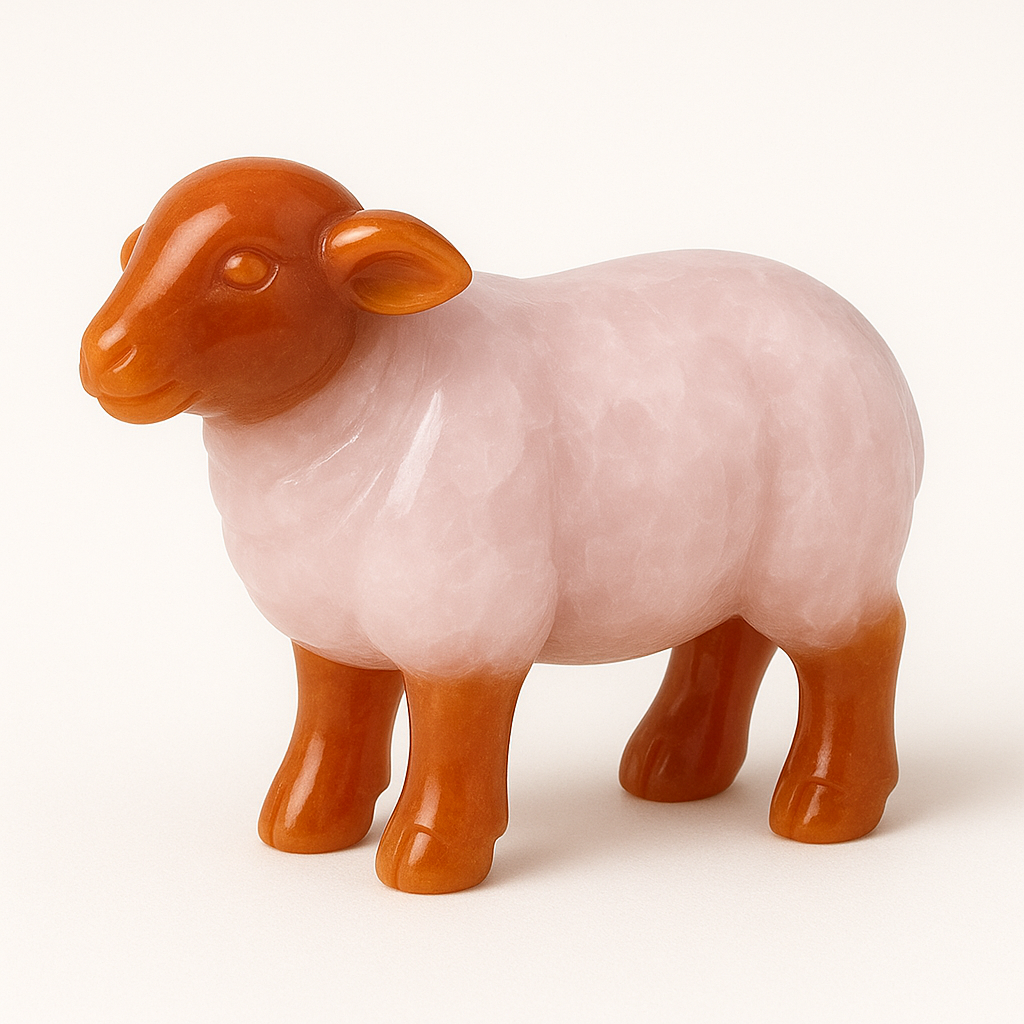
The Symbolism of Sheep
Share
Soft-footed and mild in presence, the sheep lives not by strength or isolation, but by harmonized group consciousness, peaceful surrender, and trust in rhythm and protection. Its energy is gentle, unassuming, and deeply attuned to the field of safety and belonging. The sheep does not dominate nor challenge—it seeks cohesion, comfort, and peaceful continuity. It is the emblem of innocence, purity, and the power of unity without resistance.
To contemplate the sheep is to enter the field of open-hearted receptivity, the place where fear is quieted through trust, and where the heart’s frequency aligns with simplicity and peace.
The Gentle One in Cultural Memory
The sheep has long been a central symbol in religious, pastoral, and mystical traditions, often representing purity, divine obedience, and innocence uncorrupted by distortion.
In Abrahamic scriptures, the sheep is frequently portrayed as the follower of the divine shepherd. In Christianity, the image of the Lamb of God expresses not weakness, but voluntary sacrifice and trust in the higher plan, offering a model of pure surrender to the Creator’s will.
In ancient Sumerian and Egyptian traditions, sheep were offered in ritual as symbols of peace, nourishment, and right relationship with the gods—a sacred exchange rooted in the energy of devotion and offering, not conquest.
Sheep also appear in folk traditions as emblems of fertility, gentleness, and the innocent beginning of the life cycle. They are associated with pastoral calm, home energy, and restorative presence.
Always, the sheep is a being of non-disruption, moving with collective trust, attuned not to force, but to harmony.
Flocking, Surrender, and Trust in the Greater Field
The sheep’s behavior is centered in group cohesion. It does not seek to lead, but to remain within the field of safety created by others. This is not a distortion—it is a function of trust, of knowing that security is found in union, not in isolation.
Its fleece, soft and insulating, becomes a symbol of comfort and warmth, of nurturance offered and received. The sheep is not armored, but protected by the field of unity and natural rhythm.
It is vulnerable, yes—but this vulnerability is its spiritual purity, a reminder that power is not always needed to be safe, and that softness is not the same as weakness.
Resonance with the Energy Centers
The sheep resonates primarily with the green-ray energy center—the heart chakra, which governs unconditional love, compassion, trust, and unity with all life.
Its entire being is an expression of heart-frequency alignment. It does not seek to rise above or separate—it seeks to merge in peace. This is not distortion but devotional clarity. The sheep’s love is not chosen—it is, without defense or demand. It shows that the highest form of love is trust.
There is also a secondary resonance with the orange-ray energy center—the sacral chakra, which governs emotion, relational harmony, and the self’s interface with other selves.
The sheep lives in constant relationship, not as assertion but as attunement. It teaches the seeker how to feel others without absorbing distortion, how to remain gentle while staying present, and how to give of the emotional body in a way that stabilizes the group field.
Together, green and orange in the sheep form an energetic tone of:
open-hearted peace,
relational harmony,
and the power of surrender without loss of essence.
The One Who Trusts the Field
To walk with the sheep is to learn that not all strength is sharp, and that to trust is not to abandon discernment, but to rest in the knowledge that love protects. The sheep teaches that to be part of the whole is not to lose the self—but to return to the heart where all selves converge.
The sheep does not lead.
It follows the current of peace.
It does not resist.
It trusts—and in trusting, it remains whole.
It teaches:
In unity, there is safety.
In gentleness, there is truth.
And in the open heart, there is nothing to fear.